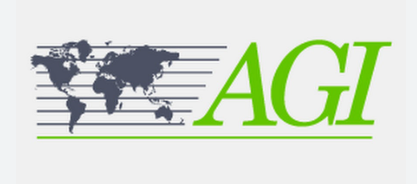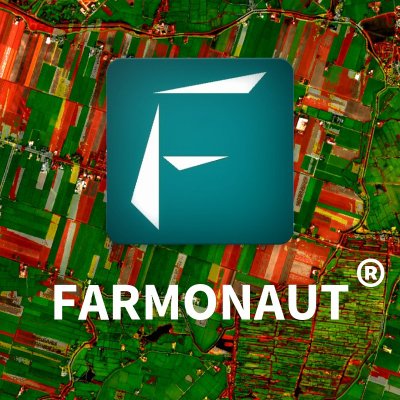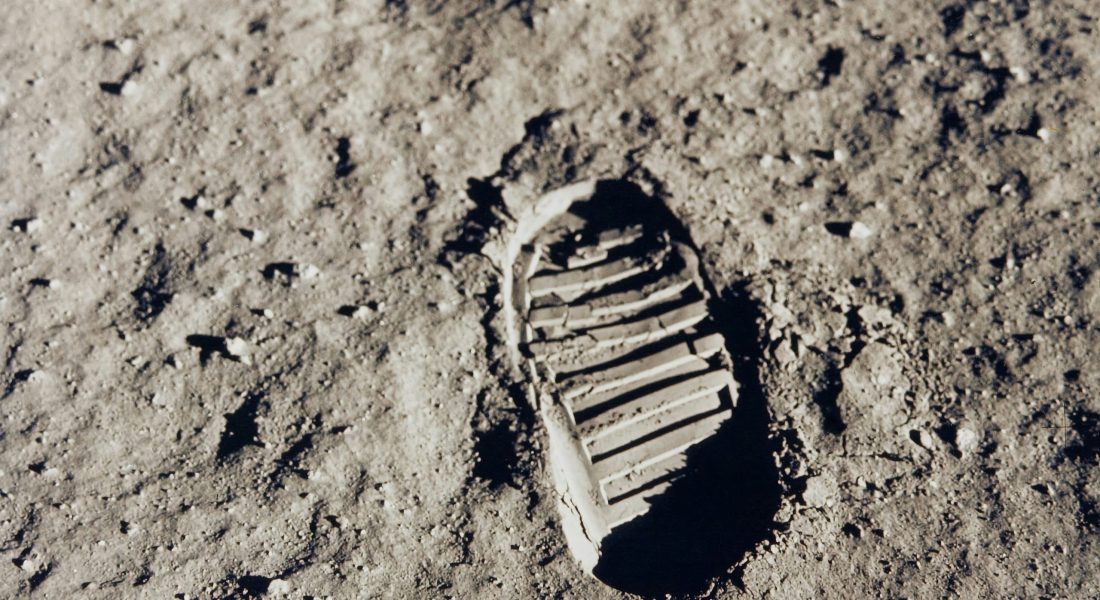Exploration geophysics tools form the backbone of modern subsurface studies. From seismic sensors that capture ground vibrations to magnetic and resistivity meters that trace variations below the surface, these instruments help scientists and engineers map what can’t be seen directly.
Field teams use a combination of portable and stationary equipment to measure wave travel times, density contrasts, and conductivity. Each tool serves a purpose – seismic for structure, gravity for mass distribution, electromagnetic for hidden fluids or ore zones. Together, they create a detailed picture of the subsurface that guides drilling, mining, and environmental assessment with accuracy and confidence.

1. FlyPix AI
At FlyPix AI, we focus on geospatial analysis that supports exploration and environmental work across multiple industries. Our platform helps transform aerial, drone, and satellite imagery into structured visual data that can be used to guide exploration projects and field assessments. By providing clear visual insights, FlyPix AI assists geophysicists and engineers in interpreting terrain, mapping features, and monitoring changes across large or hard-to-reach areas. This approach allows field teams to connect surface data with subsurface studies and align image-based findings with traditional exploration geophysics tools.
We maintain a flexible setup where organizations can create custom models for object recognition or land classification using geospatial data. The platform accommodates imagery from various sources and formats, helping users integrate visuals with seismic, magnetic, or resistivity results. This combination supports a more complete understanding of geological patterns and field conditions. Our focus remains on utility and accessibility – ensuring that complex spatial information is easier to interpret and apply to exploration tasks.
Key Highlights:
- GeoAI platform designed for image-based exploration and spatial interpretation.
- Integration with data from satellite, drone, hyperspectral, and LiDAR sources.
- Support for environmental, construction, mining, and oil and gas sectors.
- Tools for visual change detection and mapping in large survey areas.
- Custom model training to identify site-specific geological or surface features.
Services:
- Geospatial data processing and visualization for exploration projects.
- Custom model development for object or pattern recognition in imagery.
- Data sourcing and integration from multiple aerial and satellite providers.
- Interactive environment for collaborative image annotation and mapping.
- Support for environmental monitoring and terrain analysis workflows.
Contact information:
- Website: flypix.ai
- Email: info@flypix.ai
- LinkedIn: www.linkedin.com/company/flypix-ai
- Address: Robert-Bosch-Str. 7, 64293 Darmstadt, Germany
- Phone: +49 6151 2776497

2. DFI Geophysics Tool
DFI Geophysics Tool provides practical guidance on the use of geophysical and nondestructive testing (NDT) methods for engineering and geotechnical applications. The platform serves as an educational resource designed to help engineers understand which geophysical techniques are best suited for various site investigation, construction, and maintenance scenarios. Rather than turning users into geophysicists, the site helps them apply available tools correctly when assessing ground conditions, evaluating structures, or planning remediation work.
The information on the platform connects directly to exploration geophysics tools that measure, image, and interpret subsurface features. It covers surface and borehole methods, explaining how different physical properties such as resistivity, seismic velocity, or magnetic field variations can reveal what lies below the surface. By structuring its material around transportation and infrastructure contexts, DFI Geophysics Tool gives professionals a way to relate technical concepts to real-world engineering tasks like bridge foundation evaluation, pavement inspection, and vibration monitoring.
Key Highlights:
- Focused on applying geophysical and NDT techniques to engineering and geotechnical work.
- Covers both surface and borehole methods for subsurface analysis.
- Explains geophysical quantities relevant to practical field applications.
- Provides structured examples tied to transportation infrastructure.
- Includes resources from established reports and federal research programs.
Services:
- Reference material for selecting appropriate geophysical methods.
- Guidance on integrating exploration geophysics tools into site investigations.
- Instructional content on subsurface imaging and geotechnical testing.
- Categorized problem-solving sections for bridges, pavements, and subsidence issues.
- Recommendations for vibration measurement and analysis during construction.
Contact information:
- Website: dfi-geophysics-tool.org

3. Advanced Geosciences, Inc. (AGI)
Advanced Geosciences, Inc. develops electrical resistivity, induced polarization, and self-potential imaging systems that support a wide range of exploration geophysics work. Founded in 1989, AGI produces its hardware and software in-house, combining engineering and geophysics expertise to create equipment for subsurface mapping and site evaluation. The company’s tools are applied in groundwater exploration, mineral detection, and geotechnical investigations, helping engineers and scientists interpret variations in the Earth’s electrical properties to understand geological structures.
AGI’s systems are designed to collect high-accuracy data across both land and marine environments. With equipment such as the SuperSting R8 resistivity and IP imaging systems, users can perform 2D, 3D, and time-lapse surveys that visualize subsurface changes over time. The technology supports fieldwork in various contexts—ranging from dam leakage studies and slope monitoring to archaeological site assessments. AGI’s approach ties practical field measurement with digital modeling, offering consistent methods for geophysical imaging and data interpretation across multiple industries.
Key Highlights:
- Developer of resistivity, IP, and SP imaging systems used in exploration geophysics.
- Equipment designed for high-accuracy data acquisition and low noise levels.
- Applications across groundwater studies, mineral exploration, and environmental surveys.
- Supports both surface and marine geophysical investigations.
- Integration of hardware and software for complete subsurface modeling workflows.
Services:
- Manufacturing of resistivity, IP, and SP imaging instruments.
- Software for inversion modeling and 2D/3D geophysical data analysis.
- Equipment rental options for short-term or project-based exploration.
- Technical support, training, and maintenance for survey operations.
- Custom system configuration for specific geophysical applications.
Contact information:
- Website: www.agiusa.com
- Address: 2121 Geoscience Drive, Austin, Texas 78726
- Phone: +1-512-335-3338

4. Farmonaut
Farmonaut provides satellite-based monitoring systems designed for agriculture, mining, and environmental management. The platform uses Earth observation data to identify and monitor changes on the ground, offering insight into land condition, vegetation health, and mineral distribution. For exploration geophysics, Farmonaut’s solutions play a supporting role by helping detect mineral-rich areas, evaluate terrain stability, and track environmental factors that influence field operations. The same geospatial foundation used in agriculture is applied to mining and exploration work, creating a unified toolset for mapping and analysis.
The company combines geospatial imaging with AI-driven processing to translate raw satellite data into accessible maps and analytics. In the context of exploration geophysics tools, Farmonaut’s technology assists in early-stage site identification and continuous surface monitoring, reducing the need for extensive manual surveys. Their systems can highlight geological formations, monitor carbon and vegetation cover, and provide decision support for resource exploration and land-use planning. Farmonaut’s platform shows how remote sensing data can extend the capabilities of traditional geophysical methods by offering a broader, non-intrusive view of the terrain.
Key Highlights:
- Satellite-powered monitoring platform for agriculture, mining, and environmental use.
- Supports exploration geophysics by identifying mineral zones and geological structures.
- Integrates AI with multispectral and radar satellite data for surface analysis.
- Helps correlate remote sensing results with field-based geophysical data.
- Focused on sustainable and data-driven approaches to land and resource management.
Services:
- Satellite data analysis for mineral and surface feature detection.
- Geospatial monitoring for exploration and mining operations.
- Carbon footprint tracking and land-use mapping.
- Customized dashboards and APIs for integrating remote sensing data.
- Advisory support for geospatial applications in exploration projects.
Contact information:
- Website: farmonaut.com
- E-mail: support@farmonaut.com
- Facebook: www.facebook.com/farmonaut
- Twitter: x.com/farmonaut
- Instagram: www.instagram.com/farmonaut
- Address: 2810 N Church St PMB 87609, Wilmington Delaware, USA
- Phone: +1 (669)666-6882
- Play Market: play.google.com/store/apps/details?id=com.farmonaut.android&pcampaignid=web_share
- App Store: apps.apple.com/in/app/farmonaut/id1489095847

5. Screening Eagle Technologies
Screening Eagle Technologies provides a suite of geophysical survey tools designed to collect and analyze subsurface data for a wide range of scientific and engineering purposes. The company’s geophysical solutions combine ground-penetrating radar (GPR) systems, mobile mapping, and data visualization software to help researchers, engineers, and planners understand underground structures. These tools are commonly used in exploration geophysics, allowing professionals to detect variations in subsurface materials and map features such as voids, layers, and buried infrastructure with high precision. The technology supports both localized investigations and large-scale regional surveys where accurate geophysical imaging is essential.
Screening Eagle’s approach focuses on portability, high-resolution imaging, and efficient data processing. Systems like the GS8000 and GS9000 use stepped frequency continuous wave radar to achieve deeper penetration and better image clarity, while mobile mapping platforms such as the GM8000 allow for high-speed data acquisition across extensive areas. Their software simplifies post-processing and visualization, producing detailed 2D and 3D models of the subsurface. In the broader field of exploration geophysics tools, Screening Eagle’s technologies demonstrate how advanced radar and analytical systems can improve the reliability of field data and streamline the workflow from acquisition to interpretation.
Key Highlights:
- Developer of advanced ground-penetrating radar systems for geophysical surveys.
- Tools designed for subsurface mapping, infrastructure inspection, and environmental assessment.
- Integration of multichannel and high-speed GPR for wide-area data collection.
- Web-based software for post-processing and 3D visualization of survey data.
- Support for geological, engineering, and archaeological applications in exploration geophysics.
Services:
- Subsurface investigation using GPR systems for geological and structural mapping.
- Multichannel GPR surveys for detailed 3D modeling of underground features.
- Mobile mapping solutions for large-scale regional surveys.
- Data post-processing and analysis software for geophysical visualization.
- Technical support and consultation for geophysical survey projects
Contact information:
- Website: www.screeningeagle.com
- Facebook: www.facebook.com/ScreeningEagle
- Twitter: x.com/screeningeagle
- LinkedIn: www.linkedin.com/company/screening-eagle-proceq
- Address: Ringstrasse 2, 8603 Schwerzenbach – Zurich
- Phone: +41 43 355 38 00

6. Guideline Geo
Guideline Geo develops and supplies geophysical tools for mineral and resource exploration, focusing on non-destructive methods to map subsurface structures. The company’s technology supports exploration geophysics by providing instruments and software for resistivity, induced polarization (IP), transient electromagnetics (TEM), ground-penetrating radar (GPR), and seismic investigations. These systems help geologists and engineers detect mineral deposits, study geological formations, and understand the subsurface environment without extensive drilling. The instruments are designed to work across varied terrains, enabling data collection for both new exploration areas and the re-evaluation of existing or previously surveyed sites.
The company’s approach emphasizes using multiple methods together to improve the accuracy of exploration results. Resistivity and IP surveys help define mineralized zones, while TEM methods are suited for mapping deeper conductive bodies such as sulphide or nickel-copper deposits. GPR and seismic techniques add further resolution for identifying rock quality, fault zones, and the geometry of ore bodies. Through this combination of geophysical tools, Guideline Geo provides practical means to improve exploration efficiency, reduce drilling costs, and enhance geological understanding during early and advanced project phases.
Key Highlights:
- Developer of geophysical systems for mineral exploration and subsurface mapping.
- Supports resistivity, IP, TEM, GPR, and seismic survey applications.
- Focused on non-destructive and cost-effective exploration techniques.
- Instruments used for detecting mineralization, mapping geology, and defining bedrock structure.
- Combines multiple survey methods to improve data accuracy and depth interpretation.
Services:
- Electrical and electromagnetic surveying with resistivity, IP, and TEM systems.
- Ground-penetrating radar surveys for geological and structural mapping.
- Seismic investigations for depth-to-bedrock and rock strength evaluation.
- Software solutions for geophysical data processing and visualization.
- Equipment supply, integration, and technical support for exploration projects.
Contact information:
- Website: guidelinegeo.com
- E-mail: info@guidelinegeo.com
- Facebook: www.facebook.com/GuidelineGeo
- LinkedIn: www.linkedin.com/company/guidelinegeo
- Address: Hemvärnsgatan 9, SE-171 54 Solna, Stockholm
- Phone: +46 8 557 613 00
Conclusion
Exploration geophysics has always balanced science and practicality. The tools keep changing, but the goal stays the same – to read what lies beneath without digging first. From seismic arrays and magnetometers to imaging software and interpretation platforms, the work depends on instruments that can turn faint signals into something that makes sense.
What stands out today is how much smoother the process has become. Field teams can now move from raw measurements to mapped insights in less time, often combining data from different sources into one clear picture. The equipment has grown lighter, the interfaces more intuitive, and the results easier to share across teams. In the end, these tools don’t replace expertise – they sharpen it. They make it possible to see patterns that were once buried in noise, and that, more than anything, is what keeps exploration moving forward.
